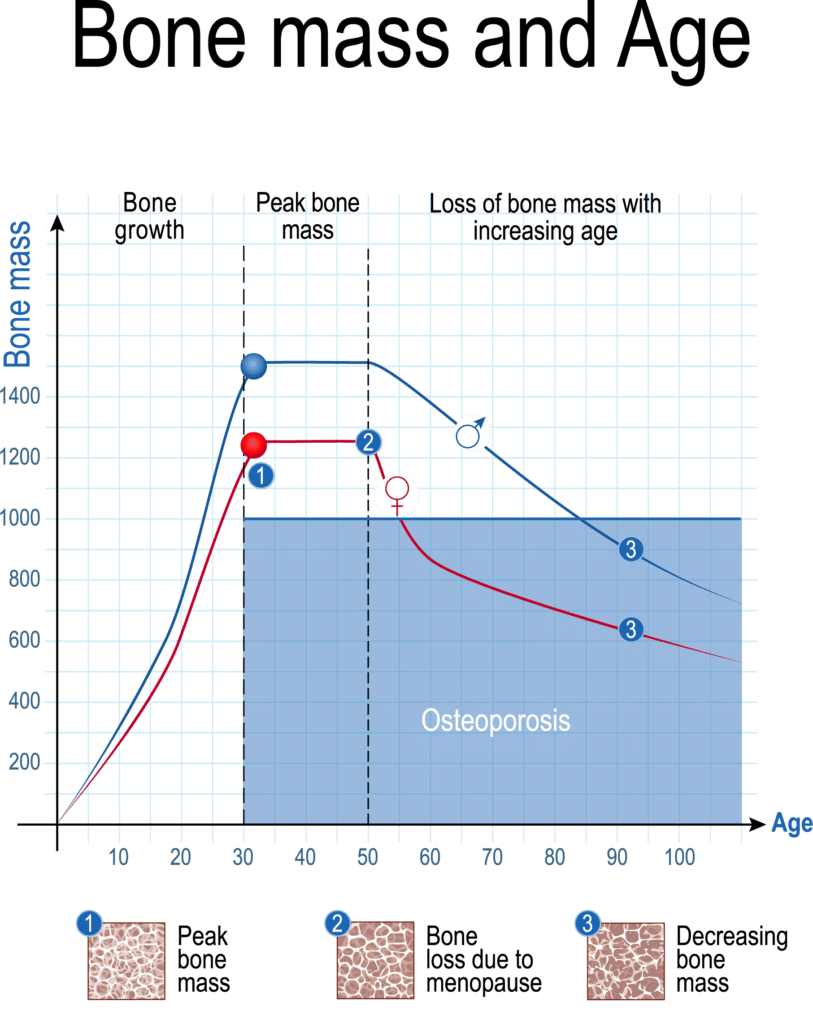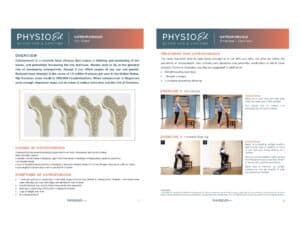The Importance of Exercising with Osteoporosis
Osteoporosis is fairly common, with an estimated 10 million people over the age of 50 suffering from this condition. And, about 43 million more people suffer from low bone mass, which puts them at an increased risk for osteoporosis. Osteoporosis is characterized by significant bone loss and decreased bone strength, which leads to an increased risk of fractures. Unfortunately, there are often no early signs of osteoporosis. One of the most important components of an osteoporosis treatment plan is physical activity, including weight-bearing, strengthening, flexibility, and balance exercises. This article will explain why incorporating these types of exercises is important for keeping your bones healthy and strong, especially if you have osteoporosis.
What is Wolff’s Law?
Julius Wolff, who was a German anatomist and surgeon, first described bone remodeling in the late 19th century. He proposed that if an increased load is placed on a bone, remodeling of the bone occurs, making it better able to resist such loads in the future. During a phase of bone remodeling, osteoclasts, which are specialized bone cells, absorb damaged bone tissue. Once this process is finished, osteoblasts, another type of specialized bone cell, deposits new, healthy bone tissue to replace the old tissue.
In keeping with this theory, he also hypothesized that if the load placed on a bone decreases, the mechanisms within the bone shift towards a catabolic state, and the bone will not be able to handle increased loads. Meaning – if you don’t place loads on your bones, your bone tissue may weaken over time.
Wolff’s Law and Osteoporosis
So now that you have a basic understanding of Wolff’s law, let’s see how it applies to osteoporosis.
Osteoporosis causes your bones to become porous and fragile, which makes them more susceptible to fractures. This may be due to the fact bone tissue absorption outpaces bone tissue production, ultimately leading to decreased bone mass.
Wolff’s law is the reason that weight-bearing and strengthening exercises are essential if you suffer with osteoporosis as they help to maintain bone mass and strength throughout your life span. Both weight-bearing and strengthening exercises place increased demands on the bones of your body, which encourages bone remodelling and helps them to become stronger and more resistant to damage over time.
The Best Exercises for Osteoporosis
Weight Bearing Exercises
Weight-bearing activities involve physical activities that you perform on your feet while working against gravity. Weight-bearing activities that are safe and effective if you suffer with osteoporosis include walking, dancing, stair-climbing, yard work, tennis, etc.
Muscle Strengthening Exercises
Muscle strengthening activities that are safe and effective if you suffer with osteoporosis include using free weights, resistance bands, or your own body weight to strengthen your muscles, especially your postural muscles.
Flexibility Exercises
Engaging in flexibility exercises, including stretching or yoga, that put your joints through their full range of motion helps to keep your muscles working effectively and efficiently. It’s important to avoid stretches or yoga positions that flex or twist your spine as these positions place unnecessary stress on your spine and increase the risk of fracture.
Balance and Stability Exercises
Fall prevention is incredibly important if you have osteoporosis as you’re more likely to suffer a fracture because of fragile bones if you take a fall. Therefore, incorporating stability and balances exercises into your treatment plan will help to keep you more stable, making you less likely to fall.
Stability and balance exercises that are safe and effective if you have osteoporosis include standing on one leg, tandem walking, and leg raises, or movement-based exercises, including tai chi.
Conclusion
You might think your bones don’t change much once you’re finished growing, but this isn’t the case. Your bones adapt and change across your lifespan. Therefore, it’s important to keep them healthy by challenging them with weight-bearing and strengthening exercises, especially if you have osteoporosis. Additionally, adding in flexibility and balances exercises will help to keep you moving well, and prevent the risk of falls and associated fracture.









